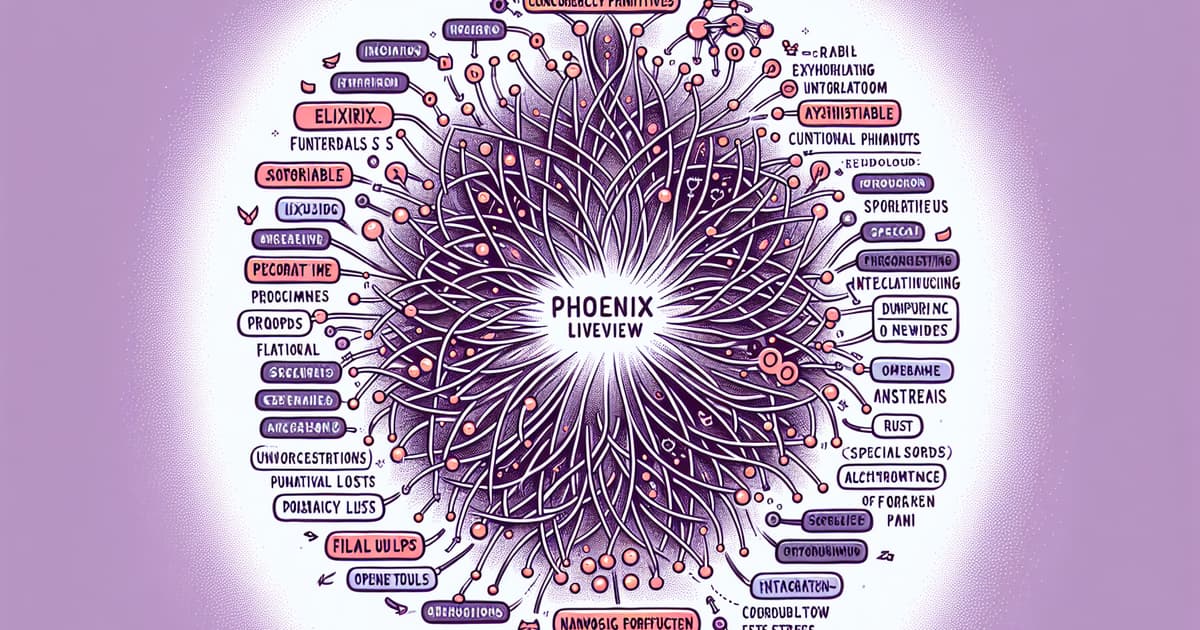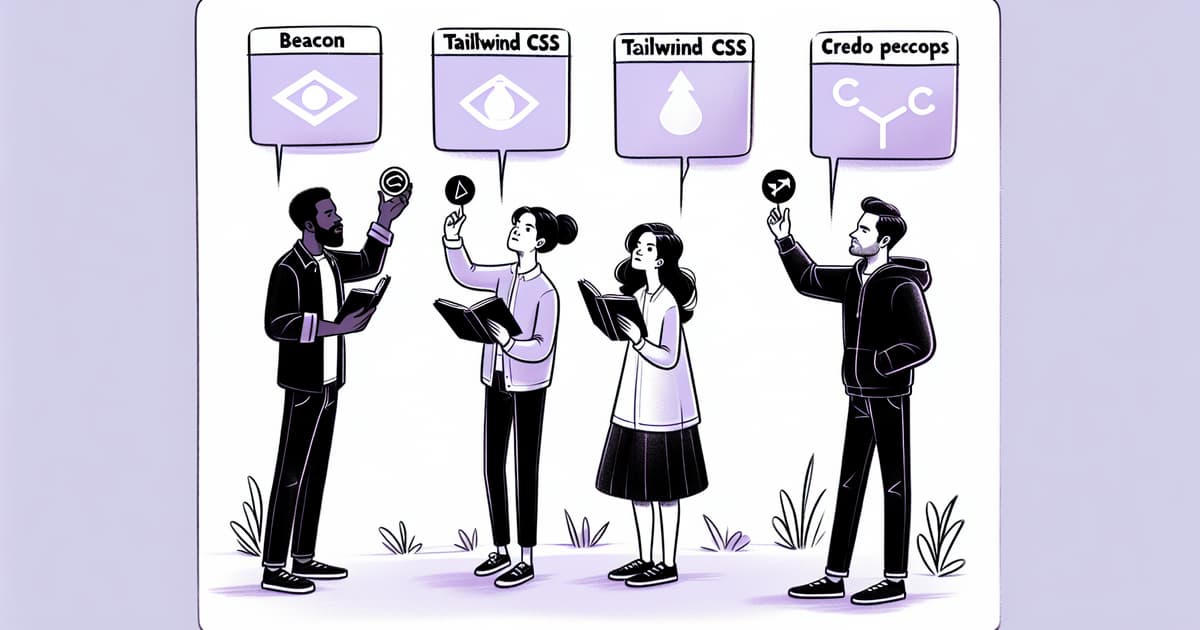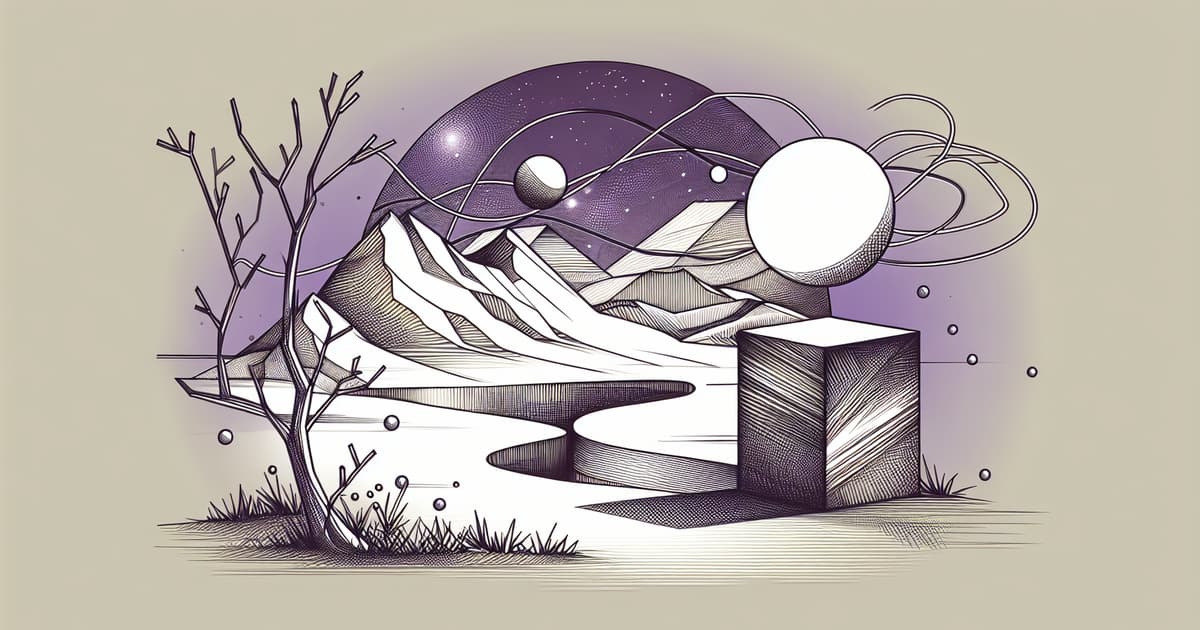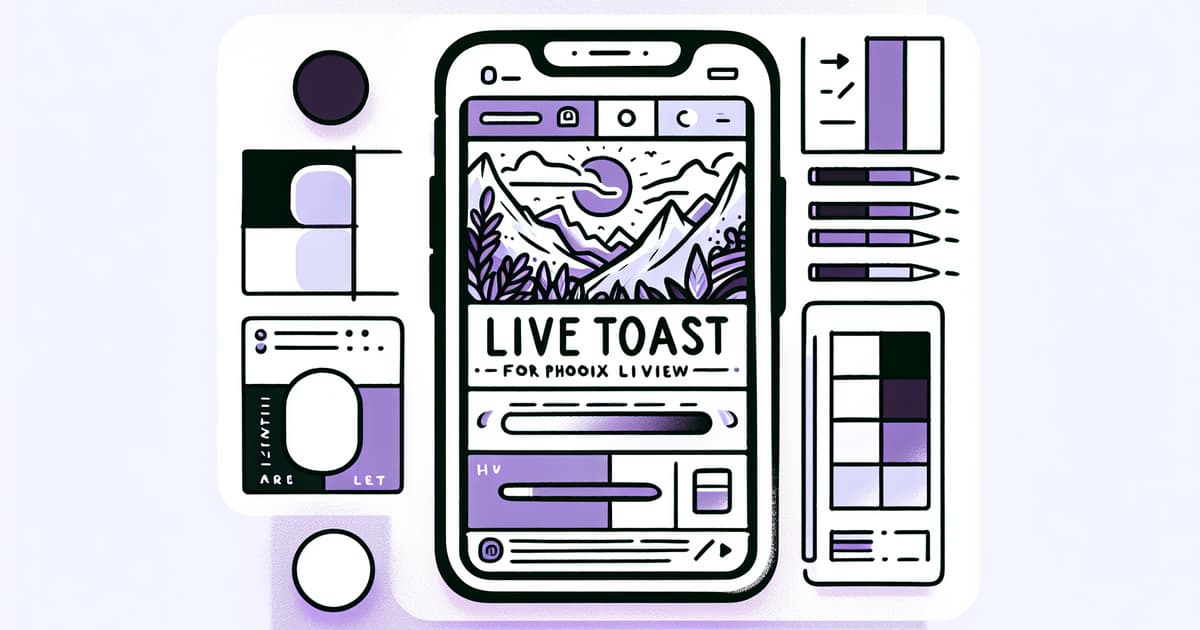We can't find the internet
Attempting to reconnect
Something went wrong!
Hang in there while we get back on track
Phoenix LiveView

Phoenix LiveView has become a game-changer in the world of web development by providing a seamless way to build interactive, real-time applications without heavy reliance on JavaScript. By leveraging Elixir's concurrency primitives and functional programming paradigms, LiveView enables developers to handle client-server interactions efficiently, offering benefits such as low-latency user experiences and reduced complexity in codebases. Key features include real-time file uploads, dynamic list management using Streams, and integration with powerful tools like SortableJS and OpenAI Chat APIs for enhanced functionality. LiveView also supports seamless integration with static and dynamic HTML elements, providing hooks for custom JavaScript logic, and advanced capabilities such as asynchronous task management and network optimization. Furthermore, its compatibility with tools like Rust and Prometheus ensures that LiveView applications can push performance boundaries while maintaining simplicity and scalability.
One of the standout aspects of LiveView is its ability to leverage the BEAM's soft real-time capabilities, which allows for consistent low-latency responses. This is particularly evident in use cases like real-time search engines, interactive charts, and live video and audio streaming. The LiveView ecosystem continues to evolve with contributions from the community, including tutorials on combining LiveView with contemporary frameworks like Svelte, and innovative projects like building AI-powered components and game development. With ongoing enhancements and community-driven resources, Phoenix LiveView is well-positioned to remain a leading solution for modern, scalable web applications.
Developers have reported significant productivity gains and simplified workflows when using LiveView for scenarios ranging from dynamic form management to complex, data-driven applications. The introduction of features like live_session for organized authorization, asynchronous operations with start_async, and global state management using PubSub further extend its capabilities. LiveView's continuous improvements, driven by its active community and core team, aim to make it even more robust and versatile for various application needs, enabling both seasoned developers and newcomers to harness its full potential.

Podcast discussing how to reduce friction in application development
Hosts Mark Ericksen, David Bernheisel, and Cade Ward discuss designing applications with fewer friction points, emphasizing the role of LiveView and Fly.io.

Discussion on Beacon, Tailwind CSS, and Credo
The hosts discuss Beacon CMS, Tailwind CSS, LiveView, and Credo in this episode.

Interview on Elixir Cards and Learning Models
Tetiana Dushenkivska discusses her creation of Elixir flashcards and their use in learning Elixir.

Interview with Philip Sampaio on Rustler Precompiled
Mark Ericksen, David Bernheisel, and Cade Ward discuss with Philip Sampaio the recent announcement of Rustler Precompiled, its benefits, and its impact for leveraging Rust libraries in Elixir projects.

Switching to Elixir with Amplified's Chris Grainger
Chris Grainger, CTO of Amplified, discusses his decision to adopt Elixir and the benefits observed from such a choice.

Leveraging Elixir for Enhanced Online Learning Experiences
Engineering lead Shaun Robinson and Elixir developer Toran Billups discuss the use of Elixir in Legends of Learning's educational games to engage students in remote learning environments.

Discussion on Programming Phoenix LiveView with Sophie DeBenedetto
In this episode, SmartLogic welcomes Sophie DeBenedetto, a GitHub engineer, to discuss her upcoming book, Programming Phoenix LiveView. Sophie shares insights on using Phoenix LiveView for interactive Elixir applications, her experiences at GitHub, and helpful advice for both new and seasoned Elixir developers.

Elixir Application in the Apple App Store
Episode 98 features Dominic Letz discussing how an Elixir application was packaged and approved for the iOS App Store. Topics include running Elixir on devices, integrating platform-specific features, and creating cross-platform applications.

Experiences and Insights Working with Elixir
_MMCXII asks about Elixir's capabilities and suitability for various tasks, including reasons to choose or avoid it and personal experiences from users.

Short Elixir and Phoenix Tips and Tutorials Collection
German Velasco introduces a new website, Elixir Streams, offering consolidated short video tips and tutorials for Elixir and Phoenix.

Discussion about LiveView and Its Impact on Single-Page Apps
Host Sophie DeBenedetto explores LiveView and its implications for the future of single-page applications.

Integrating LiveView into a Chrome Extension
Steve Bussey discusses integrating LiveView into a Google Chrome extension and its interaction with web pages like Gmail.

Round-Up of Mini-Features on Elixir with Industry Professionals
Tyler Clemens, Elom Amouzou, Elise Navarro, and Jeremy Neal share their experiences and work with Elixir. They discuss their career paths, the use of Elixir in their respective companies, and offer valuable learning resources.

Discussion with Marlus Saraiva on LiveView
Beam Radio team speaks with Marlus Saraiva, discussing his work and contributions such as Broadway, ElixirSense, and Surface.

Discussion on Ash Framework and its Benefits
In this episode, the creator of the Ash Framework, Zach Daniel, discusses how the framework models resources above Ecto to make it more expressive while supporting LiveView, REST, and GraphQL interfaces.

Using Elixir at the Royal Bank of Canada
Thanos Vassilakis from the Royal Bank of Canada explains the unique challenges and successes of using Elixir in their Capital Markets group.

Discussion on Elixir’s Potential and Projects
The hosts discuss the potential areas where Elixir can flourish and cover several related projects.

Exploring Elixir, LiveView, Nerves, and Machine Learning
Hosts discuss LiveView, Nerves, and Machine Learning within the BEAM ecosystem.

Discussion on Elixir's Impact on Developer Productivity
In today's show Alex kicks it off with the question 'What parts of Elixir really give you productivity?'

Exploring LiveState as an Alternative to LiveView
Chris Nelson discusses LiveState, a tool for embedding custom HTML components in other websites and connecting them over Phoenix channels, retaining UI state on the server.

Beam Radio Episode Discusses Agile Development with Amos King
This episode of Beam Radio features Amos King from Binary Noggin discussing Agile development.

News and Updates in the Elixir Community
In Episode 139, the hosts discuss updates and news within the Elixir community, including new features in Phoenix LiveView, an interview with José Valim, and the return of EMPEX NYC.

Summary of recent updates in the Elixir ecosystem
Hosted by Mark Ericksen and Cade Ward, Episode 138 of the Thinking Elixir podcast discusses recent updates and news in the Elixir ecosystem.

Exploring LiveView JS Commands and LiveBeats
Sophie introduces the topic of LiveView JS commands, discusses how LiveBeats uses these features, and speculates on the potential applications of this new functionality.

Introducing Polo: An Open-Source Elixir & Phoenix LiveView Powered REST Client for Browsers
Marcelo discusses the features and development of Polo, an open-source REST client that runs in browsers, powered by Elixir and Phoenix LiveView.

Exploring LiveView with Jason Stiebs
Jason Stiebs discusses his journey with LiveView, its current state and potential future developments.

Discussion on MJML EEX, Rust, Surface, and LiveView
The Beam Radio team discusses a range of topics including MJML EEX, Rust, Surface, and Phoenix LiveView.

Orion's Distributed Tracing in Production Explained
Mark Ericksen, David Bernheisel, and Cade Ward discuss Orion, a library for enabling dynamic distributed tracing in production environments, with creator Thomas Depierre. The episode delves into how Orion operates, its safe usage in production, and its benefits for performance insights.

Thinking Elixir News
Mark Ericksen: Episode 143 of the Thinking Elixir Podcast covers recent developments in the Elixir community, including updates to Phoenix LiveView, a new case study on Nerves, and various announcements related to ElixirConf and other projects.

Highlights and Updates from the Elixir Community
Hosted by Mark Ericksen, David Bernheisel, and Cade Ward, this episode of Thinking Elixir discusses various stories and updates within the Elixir community, including machine learning implementations, LiveView bug fixes, Docker updates, and a new release of Credo.

Latest Updates in the Elixir Ecosystem
Mark Ericksen - Episode 146 of the Thinking Elixir Podcast focuses on the latest Elixir community news including new releases, project updates, and blog posts related to the Elixir ecosystem.

Overview of Elixir Community News and Updates
Hosts discuss Chris McCord's keynote on LiveView 1.0, EEF election results, updates in the LiveView Native space, ex_cldr, OTP patch, and more.

Handling Scroll Position in LiveView During Redirects
Question from Level-Sleep-8365: Seeking advice on maintaining the scroll position of a sticky LiveView navbar during live redirects within an app.

Exploring the New JS.toggle_class/1 Feature in Phoenix LiveView
Mark Ericksen discusses the new JS.toggle_class/1 feature introduced in Phoenix LiveView v0.20.4 and its uses in enhancing developer experience with simple visibility toggling and animations.

Latest Updates on Elixir Development and Community
Mark Ericksen and David Bernheisel present Episode 203 of the Thinking Elixir Podcast, offering updates on the Elixir ecosystem, including Phoenix LiveView nearing 1.0, José Valim's insights on design patterns, and the release of Ash 3.0.

Creating a MIDI Sequencer Using Elixir
Speaker Dino discusses SeqEx, a MIDI sequencer project built with Elixir.

Exploring Phenix Playground for Single File Phoenix Apps
Speaker Wojtek Mach discusses transitioning from PHP to Elixir and introduces the Phenix Playground project, highlighting single file Phoenix applications.

Engaging Users with LiveView and Tailwind CSS in Elixir Projects
Meks McClure discusses how to use LiveView and Tailwind CSS in Phoenix projects, sharing practical examples through a demo web app that showcases a book collection.

Using LiveView for Real-Time Pathogen Spread Simulations
Kyle Oba presents a project on visualizing pathogen spread using LiveView, describing how physical simulations transitioned to digital using Elixir and Phoenix.

Creating a Multiplayer Browser Game with LiveView: A Use Case
Gonçalo Tomás discusses his experience in using Elixir's LiveView to recreate a multiplayer browser game that he played during his childhood. He details the architecture, challenges, and benefits of using LiveView to implement real-time capabilities and enhance the game mechanics.

Leveraging Elixir for Transportation Data Access at Transport.data.gouv.fr
Thibaut Barrère presents how Elixir is utilized to enhance development and maintenance of a national access point for transportation open data in France.

Developing Procedurally Generated Games with Elixir
Nicholas Scheurich discusses his experiences and techniques in developing video games using Elixir, focusing on creating procedurally generated content and collaborative gameplay inspired by games like Rogue and Dungeons & Dragons.

Experiences with Phoenix LiveView in a Startup Setting
Lekha Surasani discusses the experiences and advantages of using Phoenix LiveView at an early-stage startup.

Discussion of Using LiveView in Startups for Rapid Development
Daniel Caixinha discusses how LiveView can be a critical tool for startups, emphasizing the speed and productive development it brings to the table.

Introduction to LiveToast for Phoenix LiveView
7sidedmarble announces the release of LiveToast, a modern toast notification library for Phoenix LiveView designed to replace the default flash system.

Choosing Between Vue with Elixir Backend or Phoenix with LiveView
catopixel is working at a company using various technologies and is learning Elixir to potentially change jobs. They are wondering whether to use Vue with Elixir as the backend or Phoenix with LiveView for their project.

Announcing Supabase Potion: A Complete Elixir Client for Supabase Services
zoedsoupe introduces Supabase Potion, a comprehensive Elixir client library for integrating Supabase services including Auth, Storage, and PostgREST into Elixir applications.

Response Time for Waking a LiveView App on Render's Free Tier
notSugarBun asks for feedback on the wake-up time for LiveView apps hosted on Render.com's free tier.

Serving Multiple Domains with Phoenix Framework
Alexandre Moreira Xavier provides a guide on configuring a single Phoenix application to handle multiple domains and subdomains. He uses examples from YouTube's structure and detailed code snippets.

Exploring Data Filtering Options in Elixir Phoenix
tkitg: A RoR developer transitioning to Elixir Phoenix is seeking advice on Ecto data filtering options, mentioning a few potential packages like `rummage_ecto`, `turbo_ecto`, and `flop`.
© HashMerge 2025